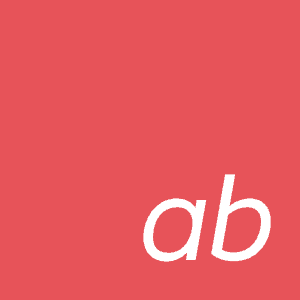
Para Triathlon
Interested in trying Para Triathlon? Submit an Athlete Interest Form Below!
Para Triathlon
Triathlon Canada has developed one of the top para-sport programs in the world over the last decade that has resulted in medal-winning results at the international racing level.
One of the newest sports added to the Paralympic Games family, para triathlon debuted at the 2016 Rio Games where Canada’s Stefan Daniel celebrated a silver medal. Since that breakthrough day on Copacabana Beach, the sport has not lost sight of its two major goals: introduce more Canadians with a disability to triathlon; and develop more Canadian medal winners.
The program receives top marks for achieving its mission to date having gone on to celebrate multiple international podium performances by Daniel, who is now a six-time World Champion and also captured a bronze medal at the 2020 Tokyo Paralympic Games; Leanne Taylor (bronze medallist at Paris 2024 Paralympic Games); and multiple podium performances by Kamylle Frenette including a bronze medal at the 2022 Para-Triathlon World Championship Finals in Abu Dhabi. Ontario’s Jessica Tuomela also won a bronze medal at the 2022 Commonwealth Games and the 2019 World Championships.
There are six medal classifications for both men and women. People with various types of impairments take part in the sport, including wheelchair users, amputees, and visually impaired athletes. They are classified according to their capabilities and may use adapted equipment to assist their movement such as handcycles, tandem bicycles, and a wide variety of prosthetics.
Triathlon Canada is looking to build on its tradition of excellence in Para triathlon to develop more para-triathletes and coaches across the country at all levels of the sport – from those interested in community sport to those dreaming of chasing the podium at the Paralympic Games.
Pathway
Overview
As a Paralympic sport, para triathlon is made up of a 750-metre swim, 20-kilometre bike and a five-kilometre run with time spent in transition between each discipline contributing to the athlete’s total event time (also referred to as a “sprint” triathlon). However, there are racing opportunities and para athletes competing in triathlon events over every distance. The umbrella of “triathlon” also encompasses additional formats collectively referred to as “multisport”. These include duathlon, aquathlon, aquabike, cross triathlon, and long distance triathlon. There are lots of opportunities and possibilities within this sport!
The starting point for all athletes should be connecting with para-sport organizations within their communities. These organizations will provide a strong foundation for competition in any para sport. See the “resources” section below for information on community programs.
The Community and High Performance streams outlined below are two unique pathways with different participation and competition goals. However, athletes can move between the two streams at any time. Classification is only required once an athlete has been identified for High Performance competition, and this is done by World Triathlon at an international competition.
Click here for the Para Triathlon pathway infographic.
How to submit an Athlete Interest Form for Para Triathlon
How to Submit an Athlete Interest Form for Para Triathlon
The first point of entry for the Para Triathlon program, regardless of pathway, is completion of the Athlete Interest Form. This form is used to collect basic information to determine the best route forward for any athlete looking to join the sport and is the mechanism for expressing interest.
Click here to submit an Athlete Interest form for Para Triathlon
General inquiries can be submitted to:
Triathlon Canada is currently working to introduce more regional para triathlon representatives and coaches to better support this program.
Equipment
Required Equipment
Sourcing equipment can seem to be a daunting task, but there are many programs in place to help with this process. You do NOT need a brand new handcycle or racing chair to get involved in para triathlon. Different equipment is needed for different categories. Here is a quick summary of specialty equipment needs:
PTWC
- Swim – a leg brace and pair of wetsuit pants are recommended (floatation)
- Bike – a handcycle is required
- Run – a racing wheelchair is required
PTS
- Swim – approved physical adaptations are permitted
- Bike – approved physical and bike adaptations are permitted
- Run – approved physical adaptations are permitted
PTVI*
- Swim – a swim tether is required
- Bike – a tandem bike is required
- Run – a run tether is required
*Note: PTVI1 athletes are required to wear blackout goggles/glasses for the full duration of the race.
How to source equipment
There is a good support system in place for obtaining specialized para equipment. The best place to start is with the list of para sport organizations provided in the “resources” section below. There are also often grants available to help cover any costs that can be accessed through the provincial sport system.
Community Competition & Classification
Overview
Classification is not required for athletes who wish to compete in paratriathlon within the community sport system. The most common community paratriathlon events run as “open” categories. This means that paratriathletes all race together in single wave.
Because paratriathlon is such a broad category it is often difficult for community events to meet the criteria for every class. However, just because a paratriathlon category isn’t listed on an event website doesn’t mean the race is not accessible. The best way to get involved is to reach out to your Provincial Sport Organization or local race organizers and let them know what support you need to participate. Often paratriathletes are included in “age group” competition categories as well. This community works hard
Para Designated Races & Development Camp Details
High Performance Competition Classes & Classification
There are 6 medal events representing sport classes in para triathlon defined as follows; there are detailed descriptions for each provided in the sections below:
- PTWC – Wheelchair users (2 subclasses – PTWC1 & PTWC2)
- PTS2 – Severe impairments*
- PTS3 – Significant impairments*
- PTS4 – Moderate impairments*
- PTS5 – Mild impairments*
- PTVI – Total or partial visual impairments (3 subclasses – PTVI1, PTVI2, & PTVI3)
*athletes may use approved prosthesis or other supportive devices for both the bike and run segments
Para Triathlon Wheelchair (PTWC) Classes
The PTWC class includes athletes with comparable activity limitations and an impairment of (but not limited to) muscle power, limb deficiency, hypertonia, ataxia or athetosis. This class includes two subclasses: PTWC1 & PTWC2. PTWC1 are the most impaired wheelchair users, and PTWC2 are the least impaired wheelchair users. All athletes within the PTWC class must use a recumbent handcycle on the bike course and a racing wheelchair on the run course. Assistance will be provided by race volunteers at the swim exit and personal handlers are permitted to assist with transitions and transfers.
The PTWC1 and PTWC2 classes compete together using a staggered start system. The PTWC1 class receives the first start time, followed by the PTWC2 class. For example (race clock time):
- Start 1 – PTWC1 Men: 0:00
- Start 2 – PTWC2 Men: +2:59
- Start 3 – PTWC1 Women: 0:00
- Start 4 – PTWC2 Women: +3:42
Please see the current WT Competition Rules to confirm start differentials.
Para Triathlon Standing (PTS) Classes
The PTS category includes athletes with lower and/or upper limb limitations. This class includes 4 subclasses (PTS2, PTS3, PTS4, PTS5). The lower class numbers represent the greatest limitations ranging from severe to mild. Each subclass includes athletes with comparable activity limitations including (but not limited to) limb deficiency, hypertonia, ataxia and/or athetosis and impaired muscle power/range of movement.
Regulated by the World Triathlon (WT), use of approved prosthesis or other support devices for both the run and bike segments are permitted, as are bike modifications. All standing classes may request support for swim exit only.
Each PTS sub-class has a stand-alone male/female start time with results compiled by sub-class.
Para Triathlon Visually Impaired (PTVI) Classes
The PTVI category includes athletes with visual impairments. This class includes 3 sub-classes based on the level of visual impairment (PTVI1, PTVI2 & PTVI3).
- PTVI1 represents athletes who have complete blindness in both eyes,
- PTVI2 represents athletes with partial sight with severe limitations, and
- PTVI3 represents athletes with partial sight with less severe limitations.
Like all para triathlon classes – there is a range of participants categorized into each sub-class. PTVI1 athletes are required to wear blackout goggles/glasses for the duration of the race to guarantee an even playing field.
All PTVI athletes race with a sighted guide. The guide also provides support with swim exit and can help in transition. A tandem bike is required for the bike segment. A tether must be used during the swim and run portions of the event. For high performance racing, the guide must meet the following criteria:
- Must be the same guide for the full duration of the event (swim, bike, run)
- Must be the same nationality as the athlete
- Must be the same gender as the athlete
The PTVI classes compete together using a staggered start system. The PTVI1 class receives the first start time, followed by the PTVI2/3 classes. For example (race clock time):
- Start 1 – PTVI 1 Men: 0:00
- Start 2 – PTVI 2/3 Men: +2:46
- Start 3 – PTVI 1 Women: 0:00
- Start 4 – PTVI 2/3 Women: +3:19
Please see the current WT Competition Rules to confirm start differentials.
Classification Process
The process for being classified varies depending on the nature of each athlete’s impairment. A classification appointment may take between 30 minutes and 2 hours. The process assesses how each athlete’s impairment impacts ability to compete in triathlon. An outcome is determined based on tested ability, rather than on disability. Classification is handled by an IT classification panel with the exception of Visual Impairment classifications which are completed by the International Blind Sports Federation (IBSA).
The athlete evaluation process consists of the following:
- Submission of an WT Impairments Medical Diagnostic Form
- A physical assessment
- A technical assessment
- An observation assessment
The WT Impairments Medical Diagnostic Form must be completed by a physician or a consultant prior to the classification appointment.
The physical assessment is completed by the classification panel to establish whether the athlete has an Eligible Impairment that meets the relevant Minimum Disability Criteria.
The technical assessment is completed by the classification panel to determine the athlete’s ability to perform specific tasks and activities that are part of triathlon (swim, bike, and/or run) in a non-competitive environment. Additional assessments may also be required.
The observation assessment is completed to ensure that the results of the athlete’s physical and technical assessments are reflected in the athlete’s ability to perform in the competition.
Resources
Resources
All of the downloadable resource documents for para triathlon are available at the link provided below. This includes intake forms, pathway information and a full list of international, national and provincial support organizations.
Triathlon Canada Nation. We Can. We Will.
Never miss an update.
Sponsors

La ligne de départ officielle pour le triathlon au Canada, menant certains sur le chemin du podium et inspirant les autres à réaliser leurs meilleures performances.
































